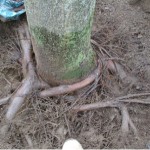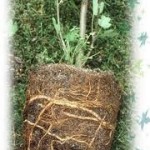 Many people have reported to me cases of severely damaged or downed trees after recent bad storms. I experienced very severe tree limb loss from big old trees that I’ve had pruned regularly by tree companies, just to prevent the weaknesses that ultimately led to the losses I unfortunately experienced. I was, understandably, surprised at the tree damage.
Many people have reported to me cases of severely damaged or downed trees after recent bad storms. I experienced very severe tree limb loss from big old trees that I’ve had pruned regularly by tree companies, just to prevent the weaknesses that ultimately led to the losses I unfortunately experienced. I was, understandably, surprised at the tree damage.
It is important to have a licensed tree expert – arborist — evaluate your prized trees to recommend pruning or other care to ensure they maintain good health and vitality, but as I’ve experienced, trees have a mind of their own. Be mindful that, of late, serious diseases have affected major groupings of trees, such as Ash, Oak, and Walnut; therefore, it is imperative to have such trees (and others) checked for signs of disease.
It is important to look out for your trees and keep them in good shape. One issue that I’ve witnessed time and time again – an issue that could have been prevented or can be corrected if caught early – is the issue of tree root girdling. This occurs when roots at the base of a tree begin to grow around the main stem (trunk) of the tree and appear to be “strangling” the trunk. This “self-choking” will cut off or restrict the movement of water and essential nutrients to the roots of the tree. Certain trees are more prone to this issue – e.g., Magnolias, Pines, Lindens, and certain Maples.
Affected trees will not die suddenly, but will weaken over time. They may exhibit symptoms such as early fall color, unusually small leaves, and dead interior branches. Tree root girdling will likely promote insect infestation and disease due to the weakened structure of the tree.
What causes root girdling? While not fully understood, this problem is thought to be the result of certain conditions – most likely due to improper planting techniques — that prevent roots from growing out and spreading in a normal manner. One typical example would be a container-grown tree where the roots are forced to grow in a circular fashion inside the container. If the roots of these trees are not correctly pruned at the time of transplanting, this circular growth pattern will continue and could cause girdling The correct pruning method at time of planting such container-grown plants, is to score, or make several slashes vertically down the rootball to an inch deep into the rootball, and a couple of slashes across the bottom of the rootball 3-4 inches deep.
Alternatively, failure to dig a large enough hole for a bare-rooted tree, at time of planting, or planting a tree too deep, can also cause roots to grow in a circular pattern too close to the trunk.
As indicated, the problem usually starts when the tree is young, and symptoms are not evident for quite some time. As the tree grows larger and the trunk expands, pressure against the base of the tree limit water and nutrients from getting to the leaves, and symptoms become apparent.
These issues speak to the importance of ensuring that trees are planted only by trained horticultural professionals who use proper methods, even if it takes more time (i.e., expense). For example, it is important to identify the root flare and ensure it is at ground level when the tree is planted. The width of the planting hole should be two to three times as wide as the rootball.
For existing mature trees, it is important to look for cases of girdling. Take note that while girdling roots may be visible, they are often found underground. If tree root girdling is noted, remedial action should be taken. While removing a girdling root is itself wounding, if the tree is young, removing the root is preferable to taking no action, which will increase the likelihood of the tree dying. Consult a tree expert if in doubt.
NOV
2012

